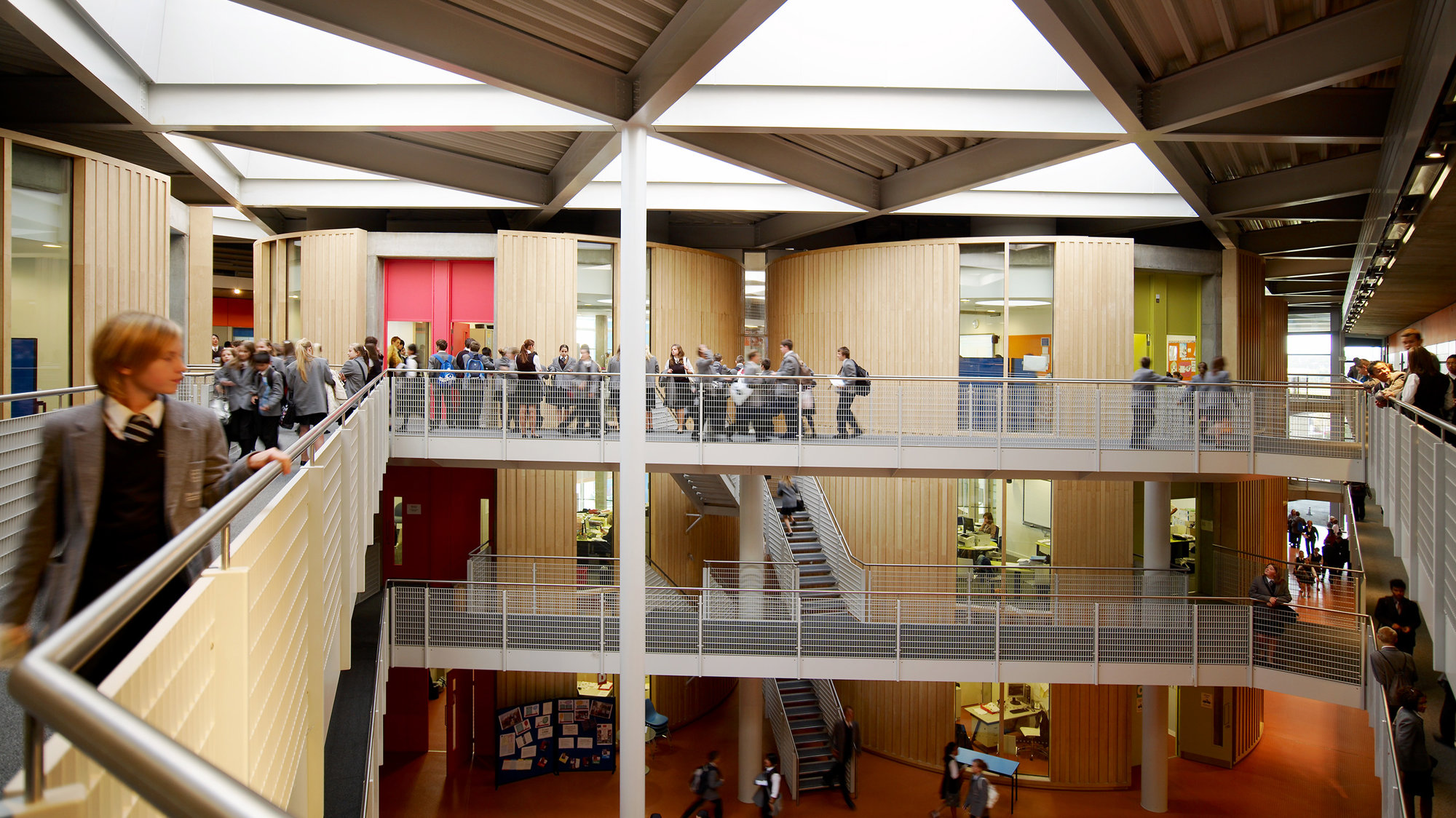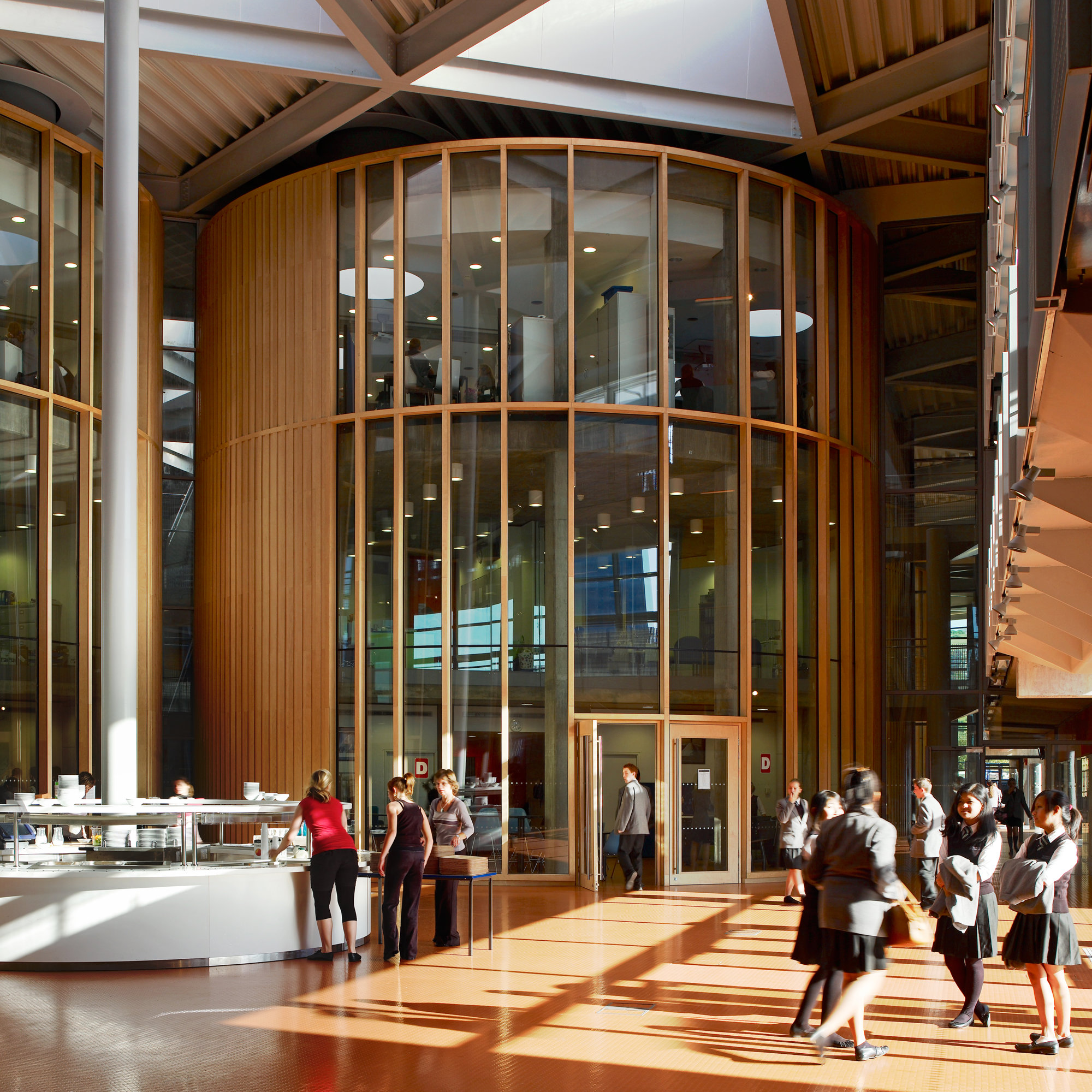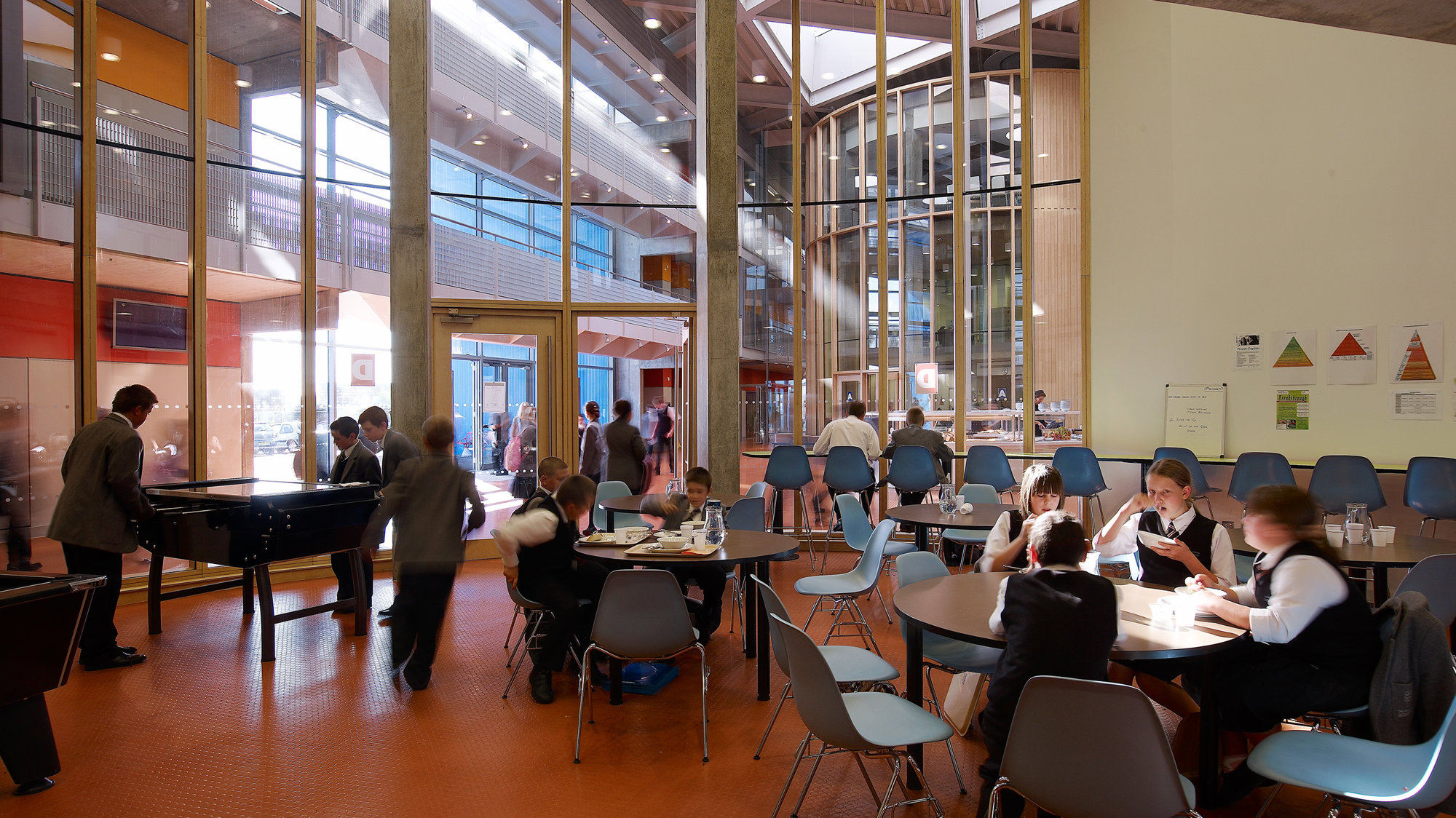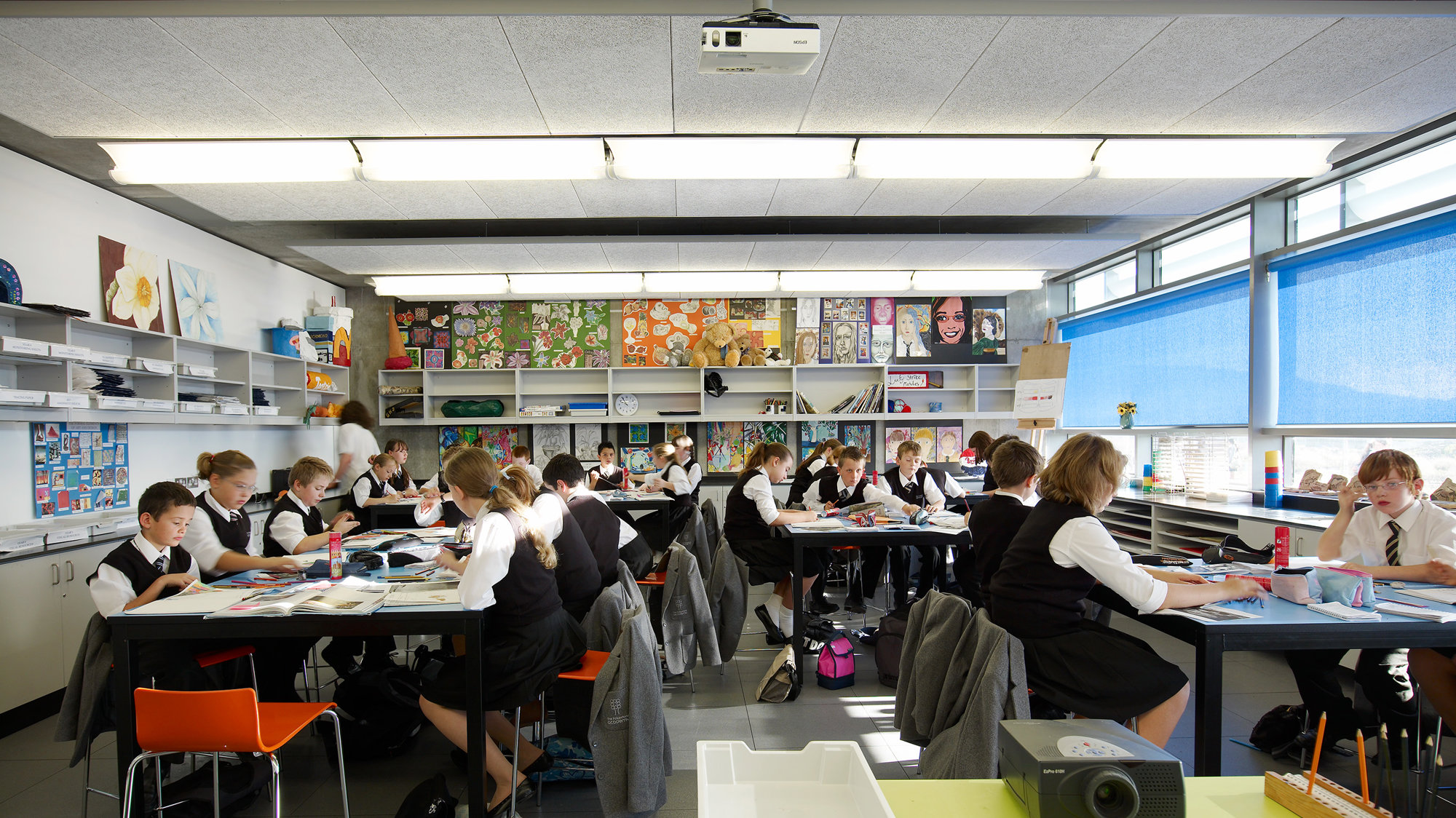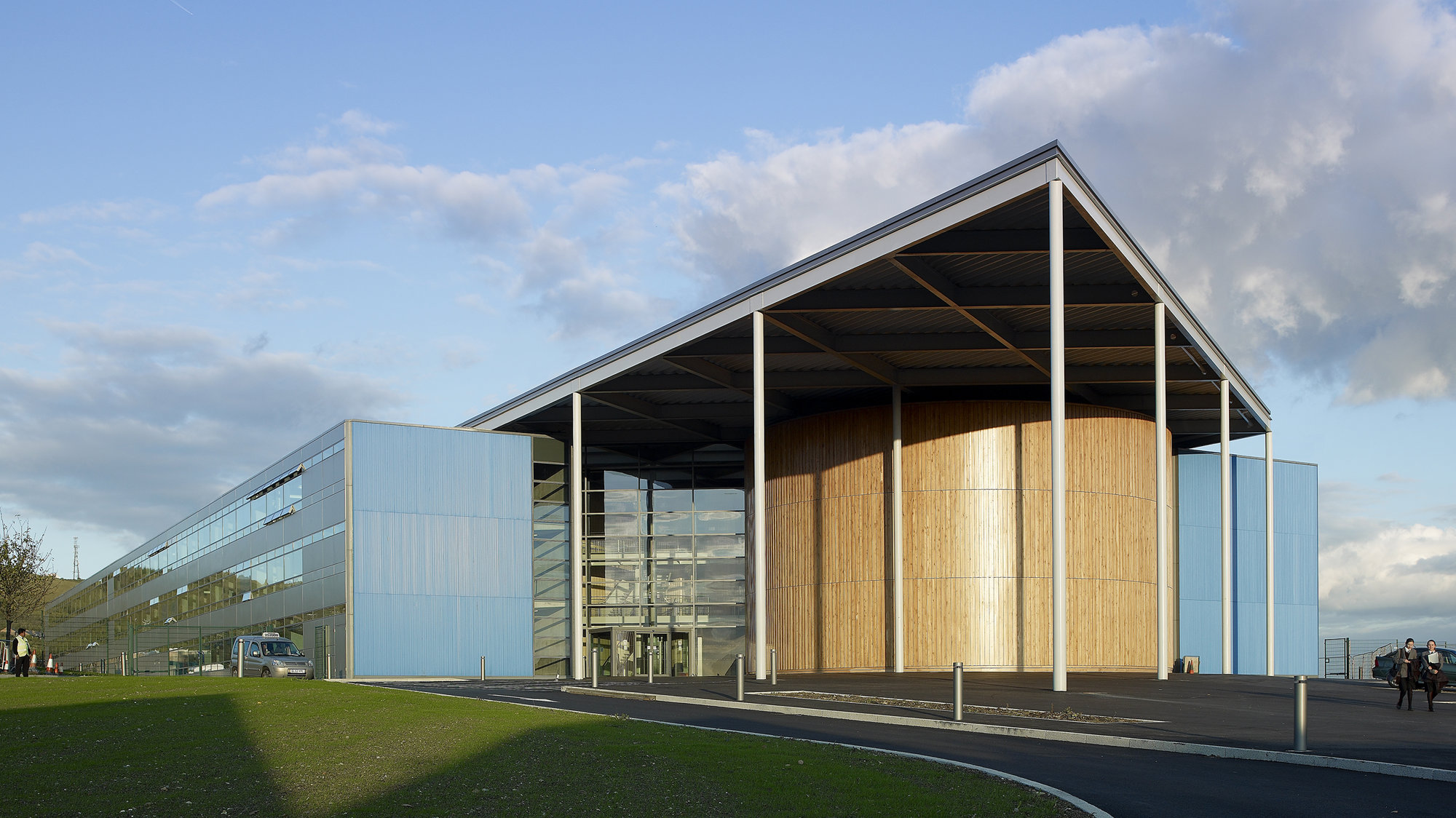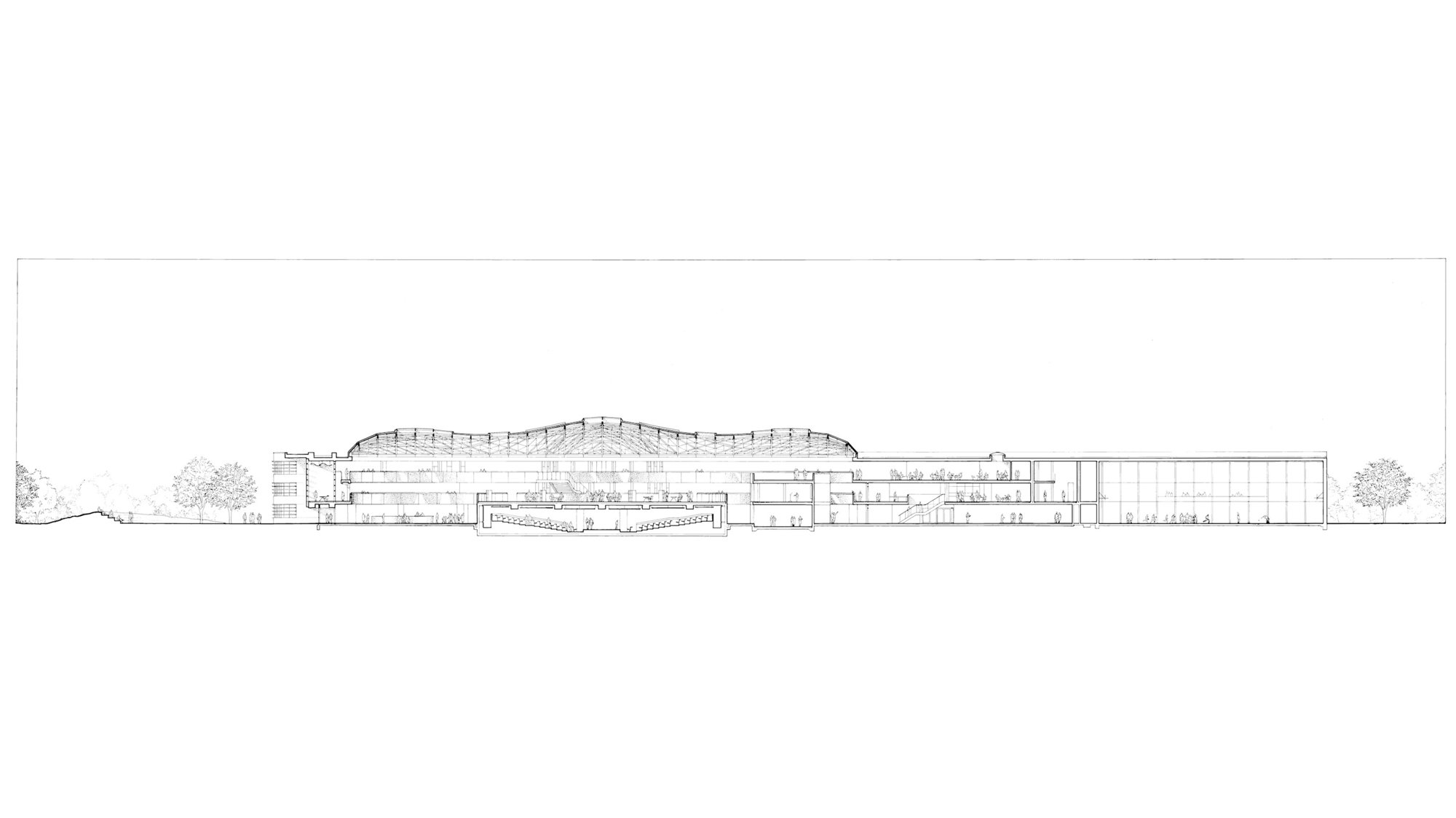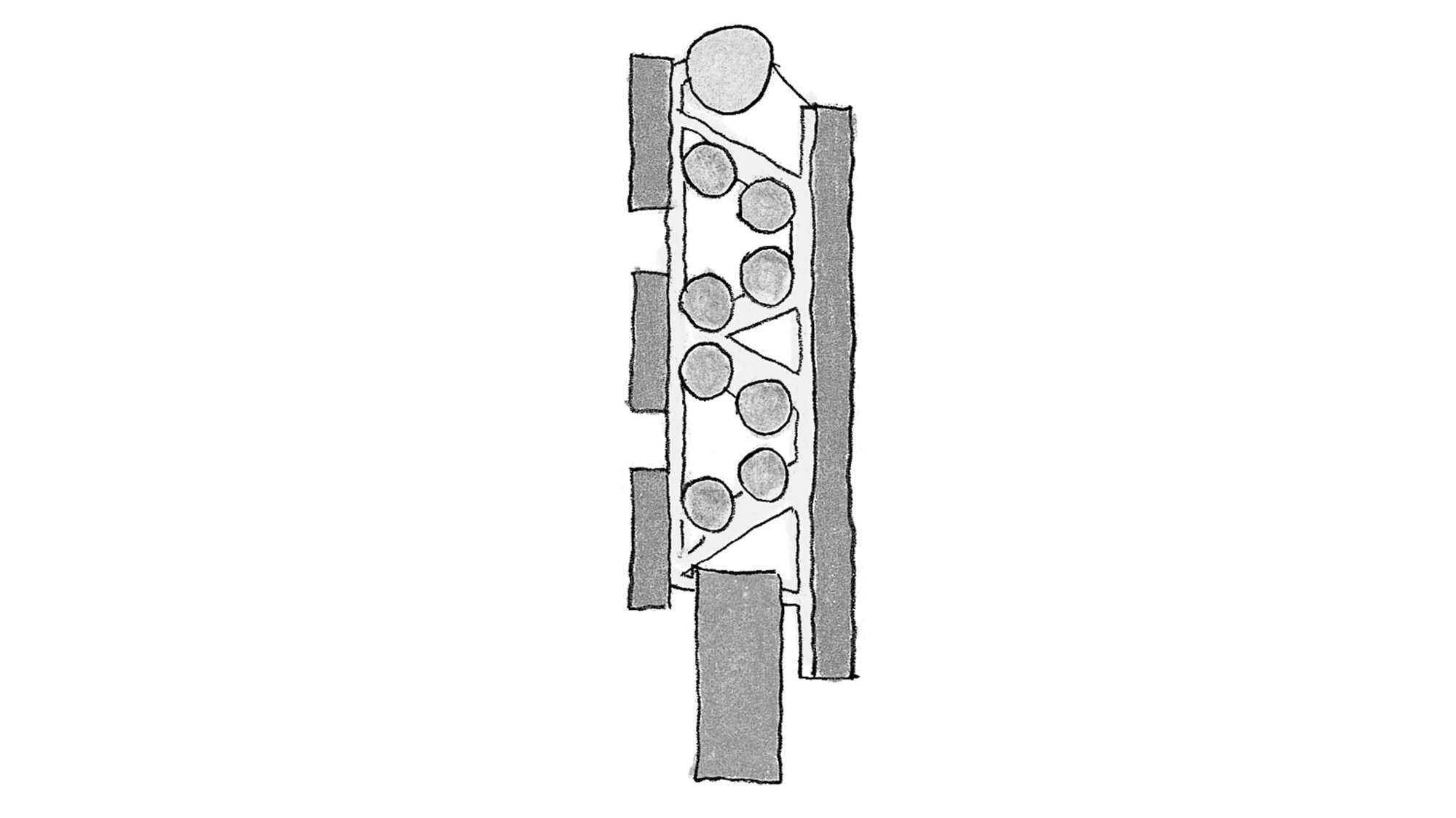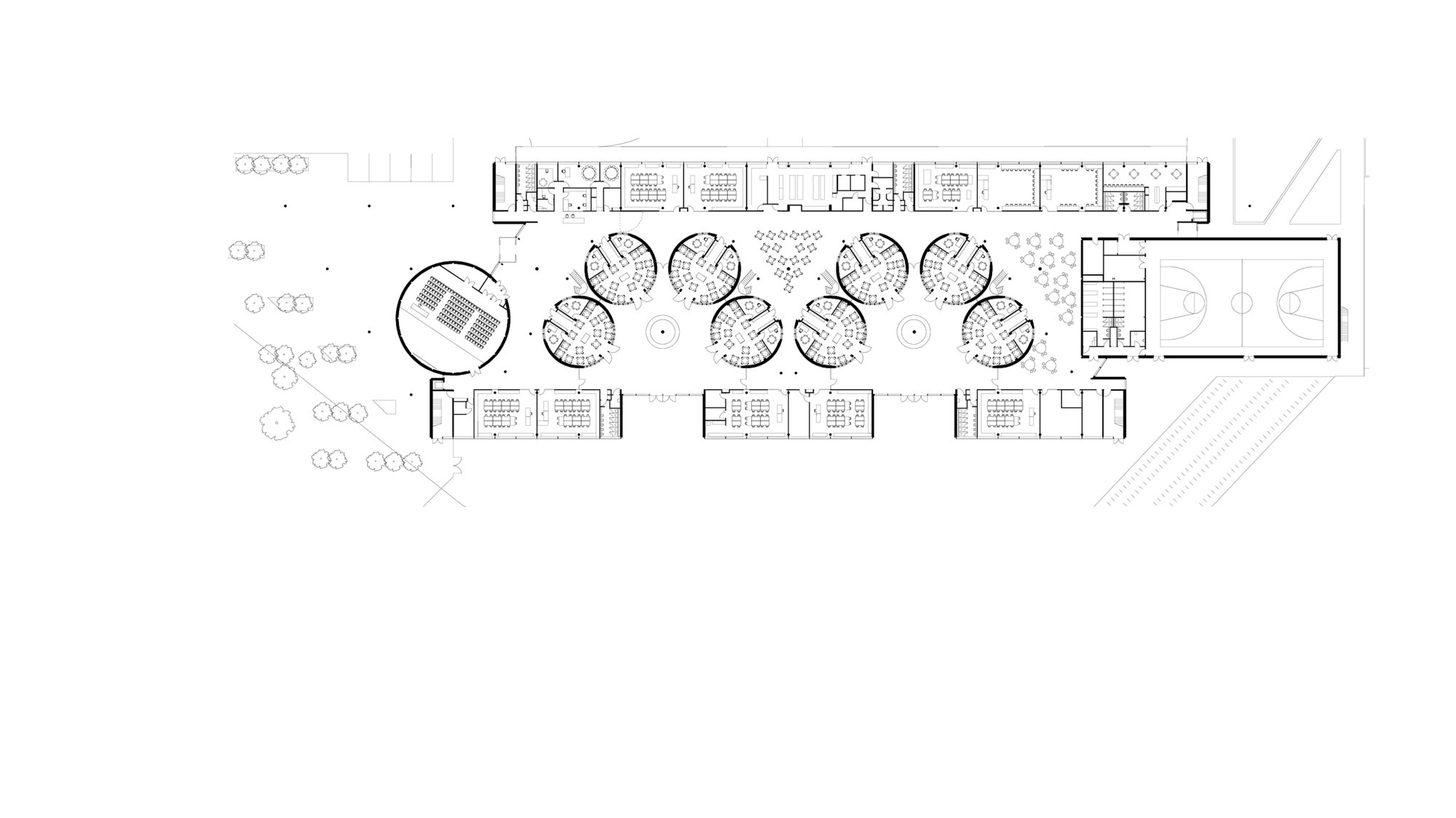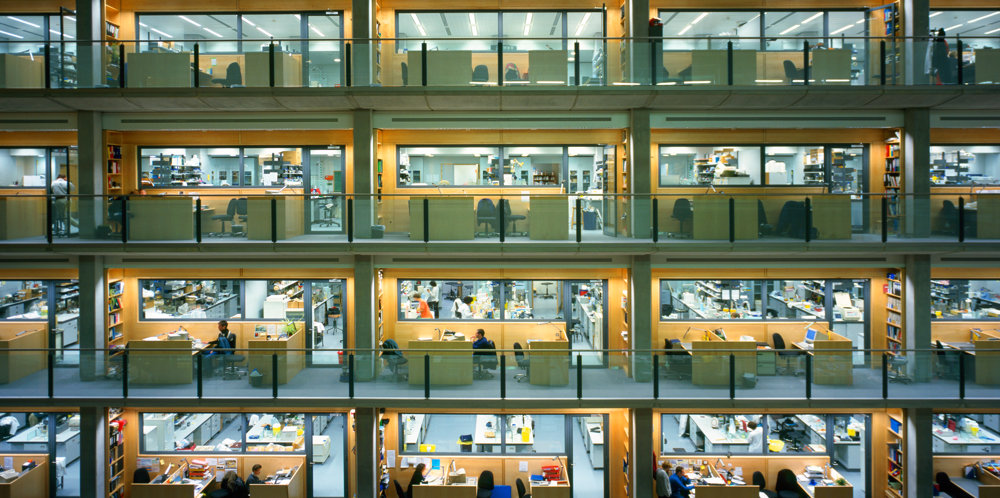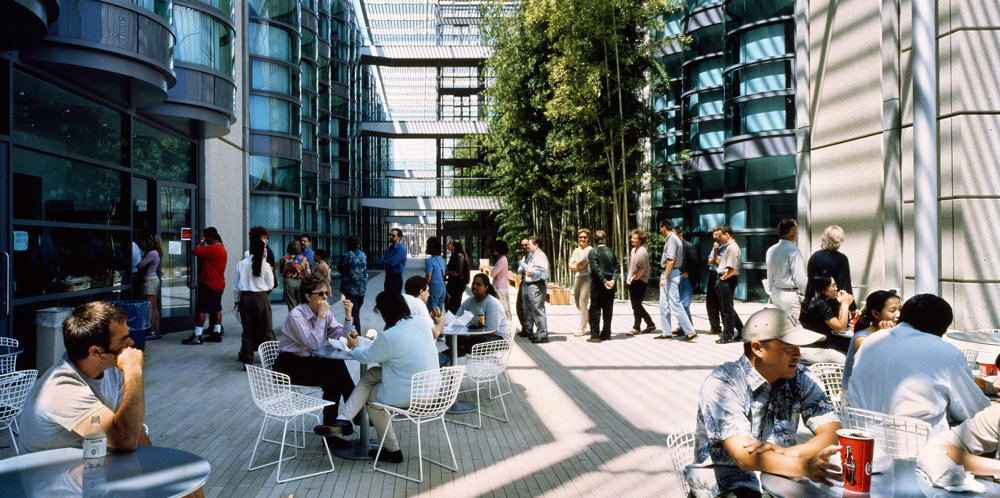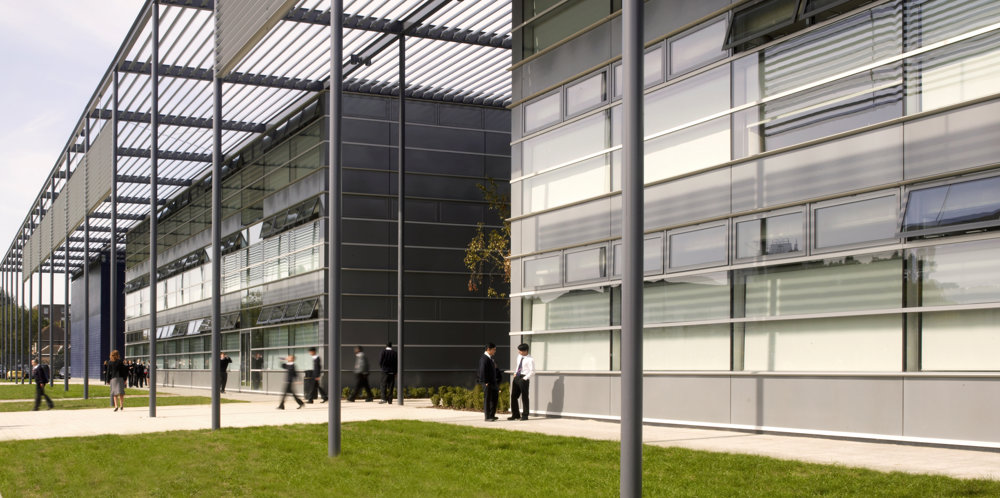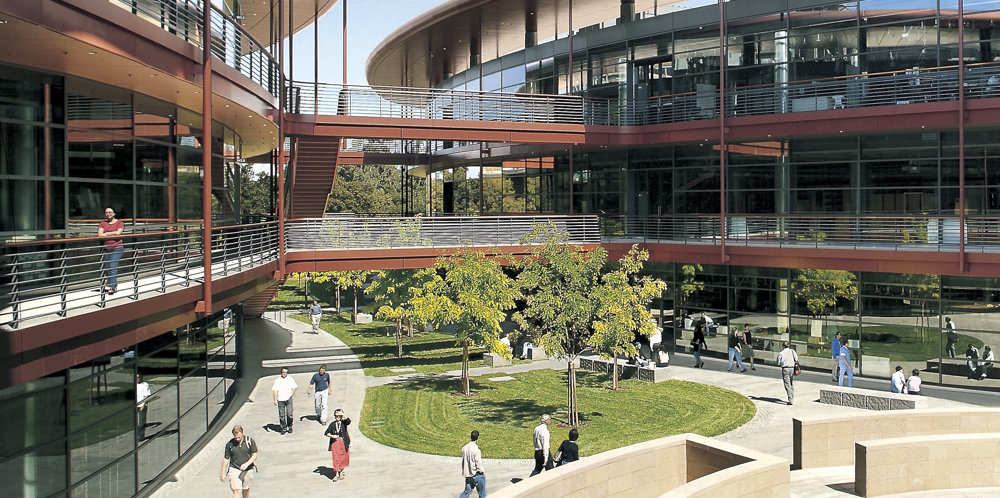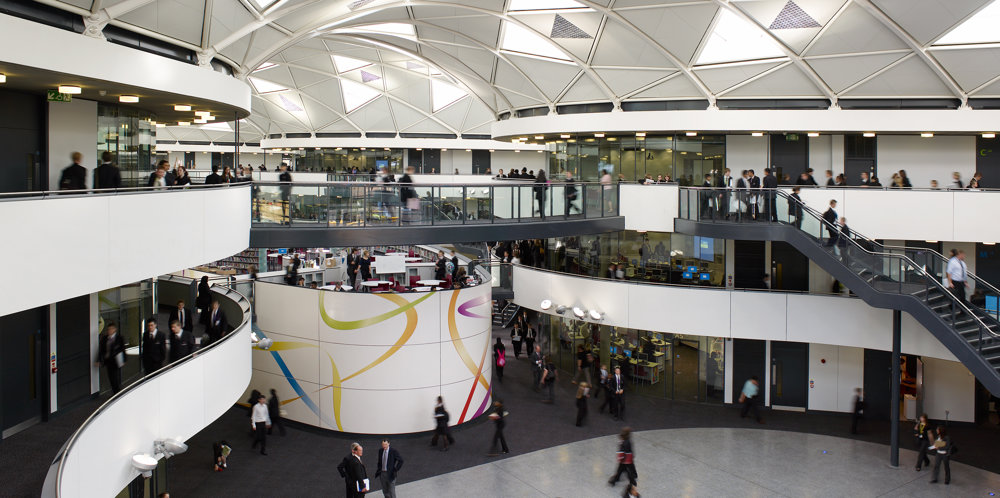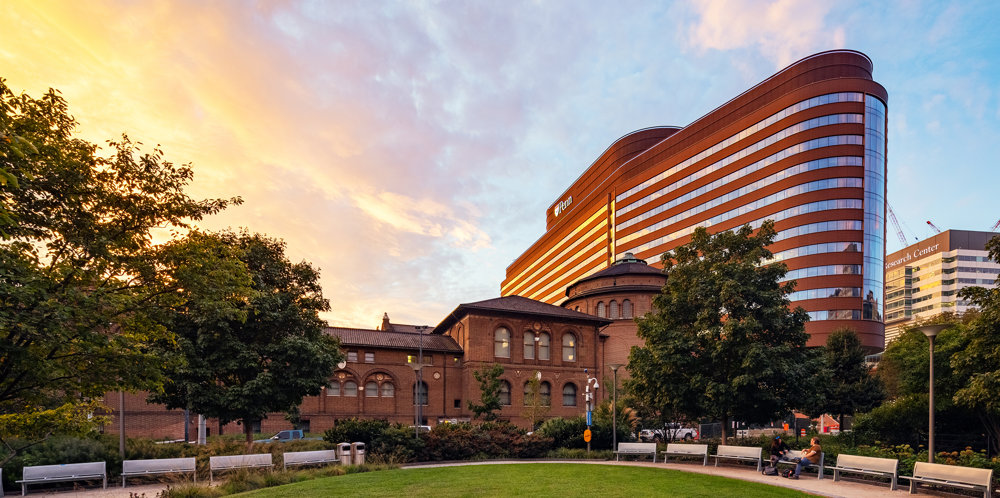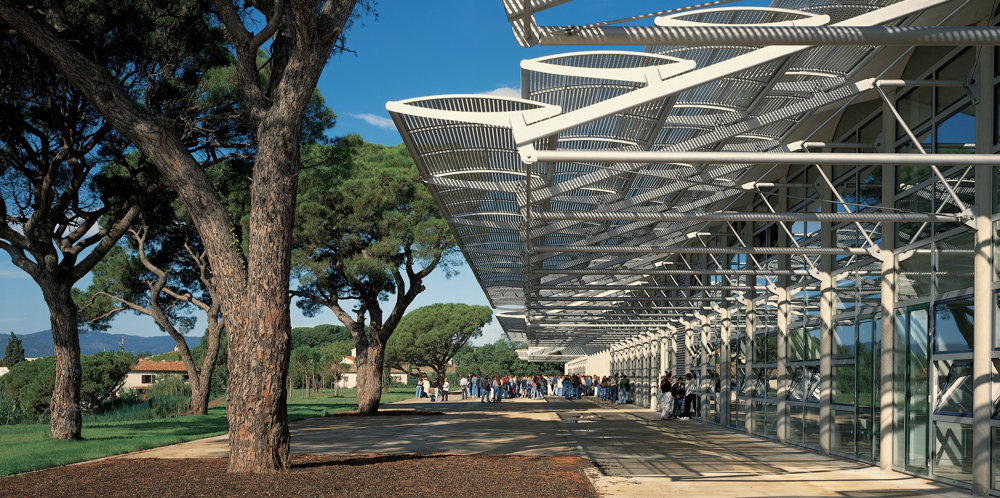Following the closure of the port and Folkestone’s dwindling popularity as a seaside resort, the coastal town had been in decline since the 1960s. Folkestone Academy was one of a number of arts-led initiatives for the town’s regeneration and, as part of the government’s academy schools programme, was founded with the support of private donor. Inspired by Folkestone’s burgeoning creative community and cross-channel links, the school has an academic focus on European Culture, Media and the Arts, and provides learning and community facilities to people of all ages. The Academy’s 1,480 pupils, aged between 11 and 18, are divided into eight ‘houses’, which provide the support and encouragement of a smaller, mixed-age group within a large student body.
On plan, the three-storey building is a simple rectangle, with two entrances and an external play area on the southern edge; a sports hall and library in the eastern end; and a circular performance auditorium in the west. These spaces are unified beneath a dramatic steel roof canopy, made up of solid triangular inserts slotted into a diagonal lattice and punctured by light wells. The roof projects over the north eastern corner of the building to shade the glazed entrance and its angular form is echoed inside in a zigzag arrangement of elevated walkways. The walkways run between the strands of perimeter classrooms to define two full-height trapezoidal atria and a smaller study area.
Inside the atria are eight timber-clad, circular drums, each of which contains a three-storey house space. Within these houses are intimate spaces for registration, pastoral support groups, dining, coat cupboards and break-out zones, overlooked by raised staff areas and seminar spaces, with language teaching rooms on the upper levels. Specialist classrooms for art dominate the north and south perimeters on the ground floor, while more traditional academic teaching facilities are placed on the quieter, upper levels. All classrooms have full height glass panels adjacent to the doors to create a sense of display. Oriented to minimise unwanted heat gain and solar glare and shaded by horizontal brise soleil, much of the building, including the flexible perimeter classrooms, is naturally ventilated.









